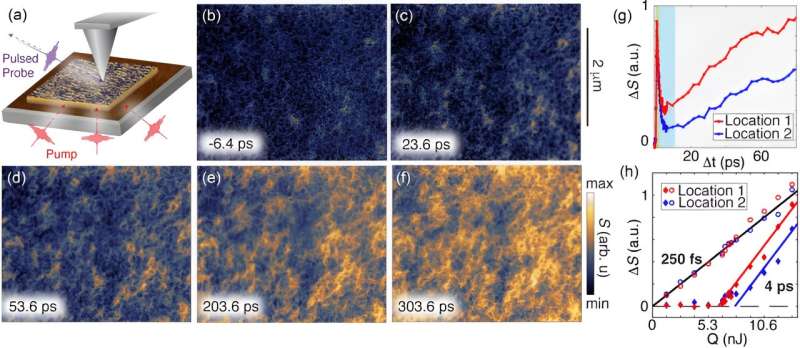This article has been reviewed according to Science X's editorial process and policies. Editors have highlighted the following attributes while ensuring the content's credibility:
fact-checked
peer-reviewed publication
trusted source
proofread
Observing how light makes a metal—new details about the insulator-to-metal transition in a quantum material

With just the flick of a switch, quantum materials can undergo drastic changes. One notable example is the insulator-to-metal transition, a reversible physical phenomenon in which a material shifts from an insulating state, which will not conduct electricity, to a metallic one that will.
The transition can be incredibly quick, an appealing property for emerging applications, including ultra-fast electronic and optical devices; brain-inspired neuromorphic computers; and energy-efficient smart windows that can adjust their transparency in response to changes in outside conditions.
While fast insulator-to-metal transitions have been documented in many materials, how they unfold over time is much less well understood, as the combination of small size and quick speed made the transition challenging to observe with previously available experimental techniques.
In new research published in Physical Review Letters, a team led by physicists at Columbia used an ultra-fast microscope to capture the dynamics of the insulator-to-metal transition in a material called vanadium dioxide (VO2) at previously unattainable temporal and spatial resolution.
"Despite the extremely small length scales and fast timescales involved, we are now in a position to record 'movies' of phase transitions developing in quantum materials in real space and real time," said first author Aaron Sternbach, a former Columbia physics Ph.D. student and postdoc who is now an assistant professor studying optically driven quantum materials at the University of Maryland.
VO2 can shift between an insulator and a metal at close to room temperature, which makes it a promising candidate for practical uses in technology. One trigger for the transition is light, which Sternbach and his colleagues showed is not an instantaneous switch. Rather, they found that the transition occurs by forming tiny patches of metal that then grow and merge nonuniformly across the sample—albeit, in just trillionths of a second.
The movies Sternbach and his colleagues recorded with their experimental setup enabled them to visualize the insulator-to-metal transition developing in select regions and growing throughout the sample.
"It is desirable to drive the phase transition with the smallest amount of energy possible," he explained. "However, when a minimum of energy is used, metal actually forms more efficiently in tiny regions of the sample. It is very exciting that we can now see this happening."
Co-author Andrew Millis, a theoretical physicist at Columbia, noted that the results are exciting on many levels. "The new ability to see how insulator-to-metal transitions actually happen will be invaluable in the design and prototyping of actual devices," he said.
"The results obtained on this material provide a fascinating challenge to our theoretical understanding of the transition, which has heretofore been based on models of spatially homogeneous materials."
More information: A. J. Sternbach et al, Inhomogeneous Photosusceptibility of VO2 Films at the Nanoscale, Physical Review Letters (2024). DOI: 10.1103/PhysRevLett.132.186903
Journal information: Physical Review Letters
Provided by Columbia University Quantum Initiative




















